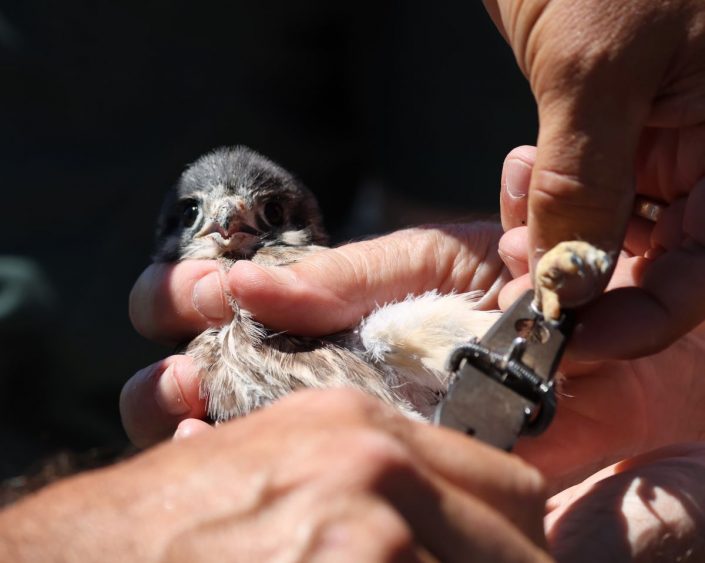A Glimpse into the Monitoring of New Jersey’s American Kestrels
by Rachel McGovern, Communications and Outreach Manager
New Jersey is home to three native falcon species, the peregrine falcon, merlin, and American kestrel. Falcons are fierce predators known for their swift flight and intensity. Of these species, I am always most excited to spot an American kestrel.
These small falcons, roughly the size of a mourning dove, are the smallest falcon species in North America. They thrive in habitats with short vegetation such as parklands, meadows, and agricultural areas. Here, they hunt for insects and small animals like mice and voles. You can often see them perched on wires or branches, scanning for prey with their distinctive tail-bobbing behavior. They nest in tree cavities or specially placed nest boxes near fields and meadows.
Recently, I had the privilege to join New Jersey Fish & Wildlife’s (NJFW) Endangered and Nongame Species Program’s American kestrel monitoring team at a nestbox site to band young kestrels. The NJFW American kestrel project works with volunteers to monitor nest boxes in New Jersey and gather critical data about this species. American kestrels were designated as a State threatened species in 2012. While there is still a lot to learn about their decline, it is understood to be at least partially due to habitat loss and a lack of nesting sites. NJFW has been monitoring these small falcons to learn about their decline and support their recovery.
